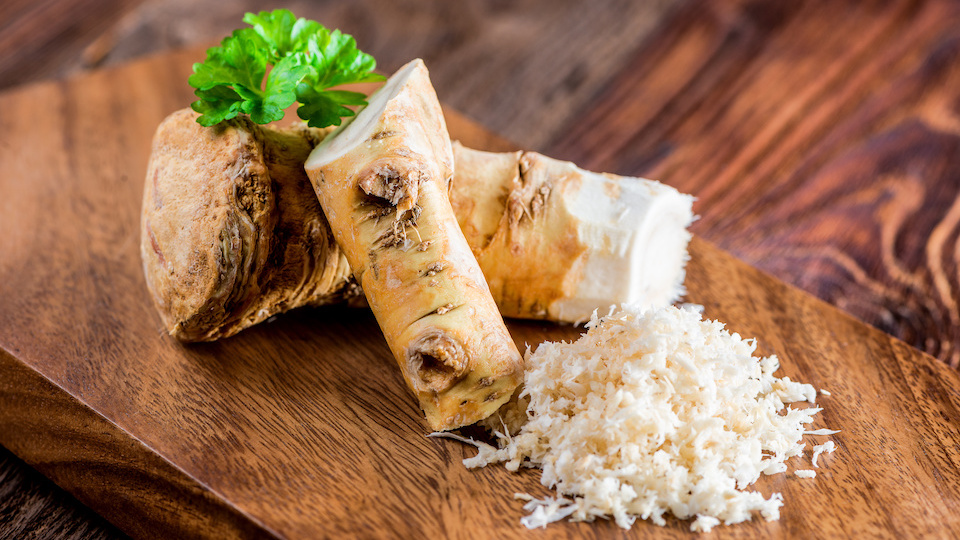If you love spicy things, you have to love peppery tasting horseradish ( Amoracia rusticana). This hardy clumping perennial herb dates back over 3000 years and is harvested for its roots that add a zip to a variety of dishes, including roast beef and cocktail sauce. The leaves of the plant are also edible when they are young, but take care not to allow animals to eat them as they are mildly toxic.
Start with rich soil
Because horseradish has long taproots, you must prepare the soil before planting. One of the best things that you can do to ensure a healthy plant is to work a couple of inches of organic matter into your garden bed. Because horseradish is a perennial, it is critical to start off with rich soil loaded with organic matter.
Leave plenty of space when planting
Start new horseradish plants using pieces of root that are a finger diameter around and 12 to 18 inches long. Because of its spreading habit, you will only need a couple of plants for your entire family. Dig an 8-inch hole and plant one root per hole on a 45-degree angle. Be sure that the crown ( the large end) is pointing towards the soil line, and the small end is at the bottom of the hole. Plant roots about 12 inches apart and backfill the hole, covering the crown root with 2-4 inches of soil. Water well after planting.
About light, soil, water, and temperature
Horseradish is not super picky when it comes to light but thrives in full sun or partial shade. A well-aerated soil with plenty of organic matter will produce the best-tasting root. Also, horseradish prefers a slightly acidic to neutral soil pH. Keep the soil well-watered but not over-saturated to avoid woody roots. Horseradish loves cool temperatures between 45 to 75 degrees F.
Should I feed horseradish plants?
Horseradish plants will appreciate a side dressing of compost or compost tea every three to four weeks.
Harvesting horseradish
There are a couple of options when it comes to harvesting perennial horseradish. You can choose to harvest just what you need and leave the rest in the ground. Keep in mind that any broken pieces left in the ground will generate new plants in the spring. If you don’t want to keep up with this aggressive grower, you can choose to lift out all of the roots and save some for planting next year.
If you plant horseradish in the spring, it will be ready to harvest by October or November. It is best to harvest the roots after you have your first frost. Carefully dig around the plant base, lift up the central root, and gather as many of the smaller roots as you can when you do this. If you do not get a frost in your area, the best time to harvest is in the winter. Enjoy young horseradish greens, harvest them early before bugs have a chance to snack on them. They will grow back in a week.
Pesky pests that love horseradish
There are very few pests that like horseradish root but a number that enjoy dining on the leaves. These include aphids, beet leafhopper, diamondback moth, flea beetles, and imported crucifer weevil. Wash aphids off, and if other pests start to become a nuisance, you can easily cover your horseradish with a light growing cloth that allows sunshine and rain in and keeps pests out.
This tasty herb can take over
Like mint, horseradish tends to be a bully in the garden and can soon crowd out other plants if not contained. If you don’t want an entire garden full of horseradish, you can grow it in a container.
How to grow horseradish in containers
Find a good size container that is at least 30 inches deep to accommodate root growth. Plant just as you would in your garden, but keep in mind that container plants will require more water than those that are planted in the ground.
When you want one large root
When you grow horseradish as an annual, you can get one large horseradish root similar to the ones that you purchase at the store as opposed to many smaller roots. Plant roots in well-prepared soil with loads of organic matter. As the plant grows, it will produce multiple shoots. To end up with one large root, remove all but one or two of the shoot. This will send energy that will allow them to grow larger.
-Susan Patterson




